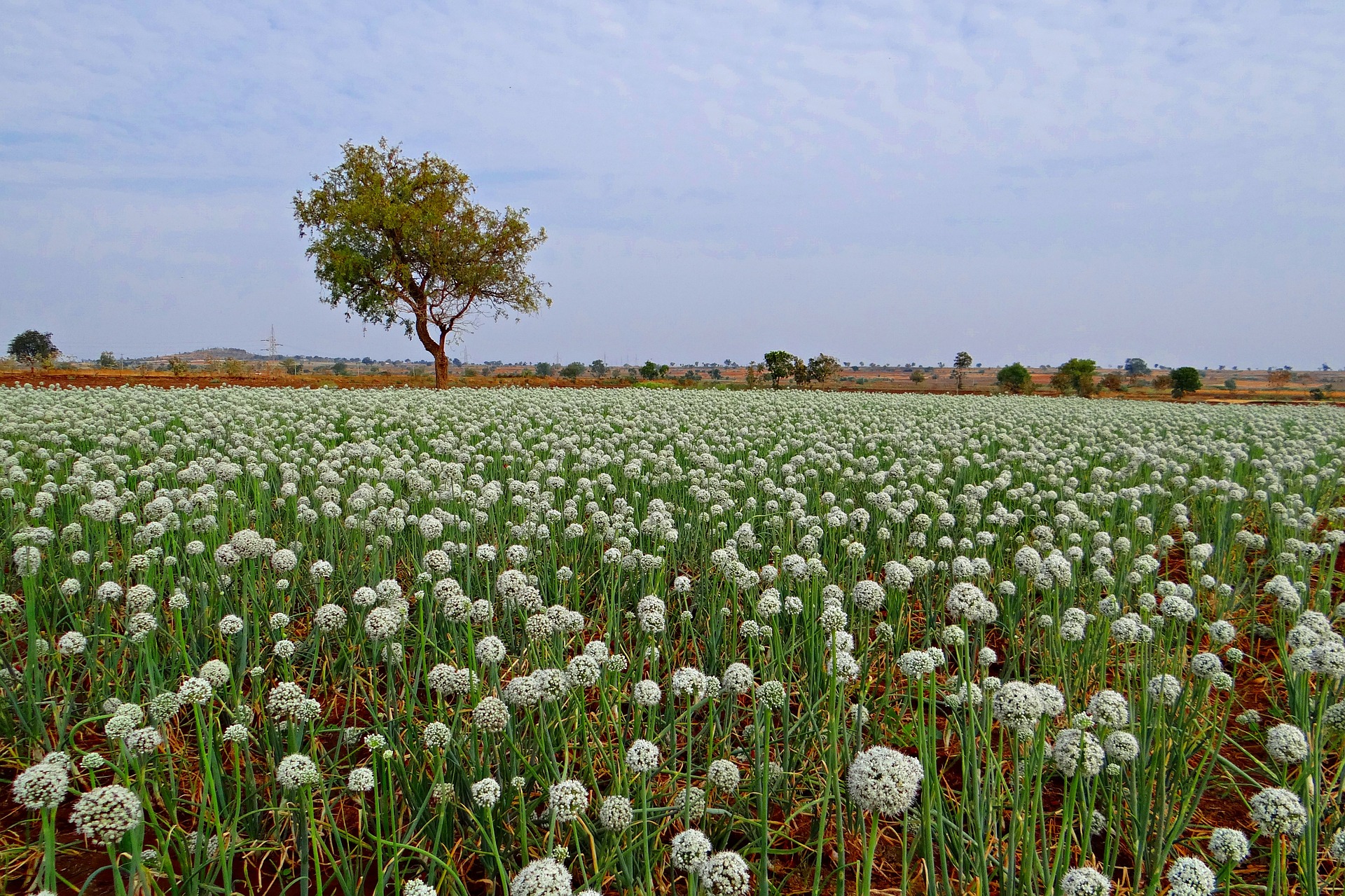When planting onions you have several options: sets (small immature onion plants), bulbs, or seed. Onions started from seed store better than sets, but mature later. Many folks start seeds in flats or containers inside or in a greenhouse, but they can also be direct seeded into the ground. This can be beneficial if you are limited on space or prefer to take a few steps out of the process. Sowing onions directly in the soil works especially well for short to moderate day varieties (see below), bunching onions, and green onions. The key is to get started early in the season.
Bulbing onions are dependent on day length for bulb production; short-day onions produce bulbs when they receive 11-12 hours of daylight, long-day onions need 14-16 hours, and moderate day onions fall in between these. Generally long day onions can be grown in the north (zone 6 and colder) and short day onions can be grown in the south (zone 7 and warmer).
To determine the days to maturity for specific varieties, calculate from date of direct seeding. Direct seed onions as soon as the soil can be worked in the spring. Even a period when the ground thaws but might refreeze is OK if you can cover the rows with a floating row cover, plastic cover, or cold frame.
Soil Requirements: Onions prefer soils rich in organic matter that are well-drained. In heavy soils a little sand can be helpful to ensure good drainage. Optimal pH is 6.2-6.8. Onions cannot tolerate acid soils, especially in early stages. Side-dress with a rich compost 4-5 weeks after planting, and keep the weeds down (onions don’t like weed competition). High levels of sulfur in the soil will increase pungency. Phosphorous (bonemeal for example) added to the root zone will help with healthy bulb formation.
Seed Depth: 1/8-1/4”
Seeding Rate: 20 seeds/ft. After germination, thin seedlings and transplant elsewhere, or let them grow for a bit and use for green onions.
Row spacing: 18-30”
Other Requirements: Full sun. Onions are very sensitive to day length and shade will dramatically slow growth. Bulbing in the north is generally triggered by the Summer Equinox.
Short day varieties (best for Southern areas Zone 7 and warmer) are planted in fall and mature in late spring, but can also be planted in early spring:Georgia Sweet, Sweet Red, Texas Super Sweet, Texas Sweet White, Red Creole, White Bermuda, Yellow Granex, Texas Legend, White Wax, Red Grano, Vidalia, etc.
Moderate day varieties (best for Zones 5 and 6) are planted in fall in mild winter climates and in early spring in northern regions: Red or White Candy Onion, Superstar, Australian Brown, Red Torpedo, Ruby, etc.
Long day varieties (grow best in Zone 6 and colder) are planted in late winter/early spring: White Sweet Spanish, Yellow Sweet Spanish, Cipollini Red or Yellow, Southport Red or White Globe, Walla Walla, Ailsa Craig, Big Daddy, Copra, Highlander, Red River, Red Zeppelin, Sterling, Ringmaster Spanish, etc.
To buy or sell onions, onion seed, onion sets, or anything else locally grown or made, visit Pick-A-Pepper.com!
Similar Stories:
- Planting Onions
- 15 Vegetable Crops To Start Planting for Fall
- Onions: Harvest, Curing, Storage
- Soil Blocks for Seed Starting
- It’s Not To Late To Plant A Garden!




